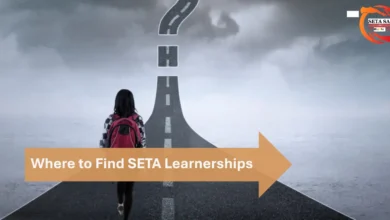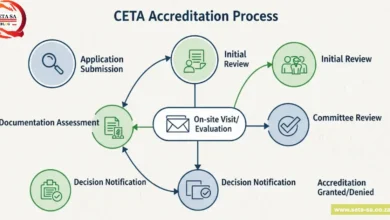
Picture this: You’re scrolling through job listings, and every single one asks for skills you don’t have. The position pays well, the company looks great, but that requirements list? It might as well be written in another language. Sound familiar?
Here’s the thing most people don’t realize – while you’re wondering how you’ll afford expensive courses or university degrees, thousands of South Africans are getting trained for free through SETA programs. And spots are filling up faster than you think.
Why Everyone’s Talking About SETA Training Right Now
SETA programs aren’t your typical classroom setup. These are real-world training initiatives built by actual industry leaders who know exactly what companies need. When you complete one of these programs, you’re not just getting a certificate to hang on your wall – you’re walking away with skills that employers are actively hunting for.
Think about it like this: Would you rather spend years studying something theoretical, or learn the exact tools and techniques that businesses use every day? SETA accredited courses bridge that gap between what schools teach and what workplaces actually need.
The Part Nobody Tells You About (But Should)
Free training sounds too good to be true, right? Here’s what makes SETA programs different from those “free” online courses that hit you with hidden fees halfway through:
Getting Paid While You Learn
Some SETA learnerships actually give you a monthly stipend. Yes, you read that correctly – you can earn money while building your skills. It’s like getting paid to invest in yourself.
Your Resume Gets an Instant Upgrade
When employers see SETA qualifications on your CV, they know you’ve been trained to industry standards. It’s not just about having a certificate – it’s about proving you can do the work from day one. Many companies actively recruit through SETA programs, which means you could land a job before you even finish training.
The Skills Actually Matter
Unlike courses that teach outdated methods, SETA training gets updated regularly based on what industries need right now. Software changes? They update the curriculum. New regulations come out? You’ll learn about them. This keeps you relevant in a job market that’s constantly shifting.
Here’s How to Grab Your Spot (Before Someone Else Does)
Most people assume these programs are complicated to access, but the process is more straightforward than you’d think:
Step 1: Figure Out Which SETA Covers Your Field
Different industries have different SETAs. Whether you’re interested in hospitality, IT, finance, or construction, there’s a SETA managing training for that sector. A quick visit to the complete list of SETAs in South Africa will show you where to start.
Step 2: Get Your Documents Ready
Most programs ask for basic stuff – your ID, proof of address, and your latest school results. Some have specific requirements, but knowing what you need ahead of time saves you from scrambling later.
Step 3: Don’t Put All Your Eggs in One Basket
Apply to multiple programs. Seriously. Application processes can take time, and you never know which one will respond first. Cast a wide net and give yourself options.
Step 4: Check Government Support Options
Sometimes you’ll find additional funding or support through government initiatives that work alongside SETA programs. These can cover things like transport costs or study materials that might not be included in the main program.
The Mistakes That Cost People Their Chance
I’ve seen too many people miss out on incredible opportunities because of simple, avoidable errors:
Waiting for the “Perfect” Program
There’s no perfect program. If something looks 80% right for you and applications are open, apply now. You can always switch paths later, but you can’t get back time you’ve wasted waiting.
Ignoring Programs Because They Don’t Require Matric
Some of the best learnerships don’t require a matric certificate. If you’ve been holding back because of your education level, stop. There are solid programs designed specifically for people in your situation.
Not Following Up
Send that application and forget about it? Bad move. A polite follow-up email or call shows you’re serious and keeps your application from getting buried under hundreds of others.
What This Really Means for Your Future
Let’s be real about what’s at stake here. The job market isn’t getting easier. Every year, more people are competing for the same positions, and employers are getting pickier about who they hire.
But here’s your edge: while others are still figuring out their next move, you could be halfway through a training program that guarantees you walk out with marketable skills. While they’re paying thousands for courses that might not even help them get hired, you’re getting trained for free.
The catch? These opportunities don’t wait around. Funding cycles end. Programs fill up. Deadlines pass.
Your Next Move (Yes, Right Now)
Stop reading and start doing. Open a new tab, visit the SETA website for your industry, and see what’s currently accepting applications. Bookmark programs that interest you. Set reminders for application deadlines.
Better yet, reach out to someone who’s completed a SETA program and ask them about their experience. Real stories from real people will tell you more than any official description ever could.
The difference between people who change their career trajectory and people who stay stuck isn’t talent or luck – it’s action. The training is there. The funding is there. The jobs waiting on the other side are there.
What’s missing is your application.
Don’t let this opportunity slip through your fingers because you “didn’t get around to it” or “waited for a better time.” There is no better time than right now, while spots are still available and funding hasn’t run dry.
Your future self will either thank you for taking this step today, or wonder why you let free, career-changing training pass you by. Which version of that story do you want to live?





